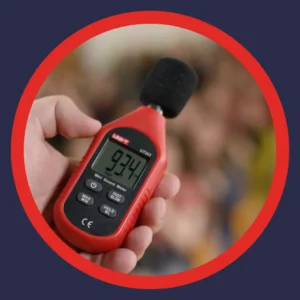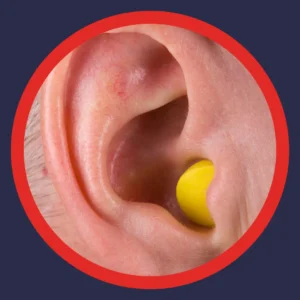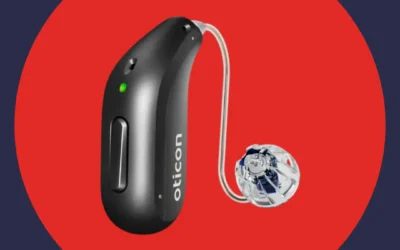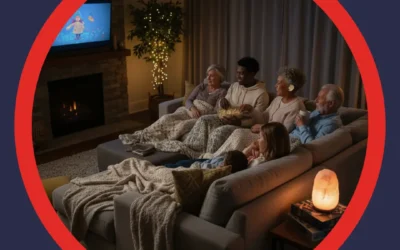Hearing loss among millennials and Gen Z is increasing at alarming rates. Once considered an aging condition, hearing loss now affects younger generations at record levels.This growing issue demands attention, education, and prevention.
Why Is Hearing Loss Rising in Younger Generations?
The reasons behind this trend are many, but they mostly center on daily habits and environments.
Digital Lifestyles = Higher Risk
Millennials and Gen Z grew up in the digital age. Smartphones, earbuds, streaming, and constant content have shaped their world. Unfortunately, these tools often come at the cost of auditory health. Prolonged headphone use, loud concerts, and background noise all contribute to rising rates of early hearing loss.
A study at Cincinnati Children’s Hospital found that over half of 20-somethings had trouble hearing speech in noisy environments—a key indicator of extended high-frequency (EHF) hearing loss. Though not picked up in standard hearing tests, EHF loss affects real-world communication.
One key reason: EHF hearing can decline even in people with “normal” audiograms. Many younger adults struggle in noisy environments long before their hearing loss becomes clinically detectable.

Unsafe Listening Is Widespread
The World Health Organization (WHO) estimates that 1.35 billion young people are at risk of hearing loss due to unsafe listening habits. That includes:
- Listening at high volumes through earbuds or headphones
- Spending extended time in loud venues like concerts or clubs
- Having little awareness of volume levels and sound exposure times
Even brief exposure to volumes over 100 dB can cause lasting hearing damage. Many venues now reach levels between 104 dB and 112 dB—dangerous even for short periods.
Streaming platforms and mobile devices don’t warn users enough about unsafe volume. Add in poor headphone quality, and the risk increases.
Some personal listening devices allow users to exceed 105 dB—levels that can damage hearing in less than five minutes. Combined with longer listening sessions, the cumulative effect can be devastating.
Develop a deeper understanding by learning about World Hearing Day.
Understanding How Hearing Loss Happens
Noise-induced hearing loss (NIHL) occurs when hair cells in the inner ear become damaged by loud sounds. These cells can’t regenerate. Once they’re gone, the hearing loss is permanent.
High-frequency hearing loss typically comes first, which means difficulty understanding speech, especially in background noise. People may not notice it until it starts affecting daily communication.
Extended exposure without noticeable symptoms creates a false sense of safety. By the time problems emerge, the damage is already done.

Hearing Loss Affects More Than Just Your Ears
Hearing problems don’t stay isolated. They can influence every area of life, including:
- Social isolation and communication difficulties
- Poor job performance
- Emotional distress or embarrassment
- Higher risk of cognitive decline and dementia
One study even showed that untreated hearing loss can accelerate brain shrinkage. That makes early detection essential for mental and emotional well-being.
Difficulty following conversations can cause young people to withdraw from social settings or appear distracted in school or work. These misunderstandings may harm self-esteem, relationships, and academic or professional progress.
Ototoxic Drugs and Medical Conditions
Noise isn’t the only factor. Ototoxic medications can harm hearing. These include some antibiotics, chemotherapy agents, aspirin in high doses, and certain diuretics.
Medical conditions like Meniere’s disease, otosclerosis, head injuries, chronic ear infections, and genetic predispositions also raise the risk.
Repeated childhood ear infections can also damage the part of the cochlea responsible for EHF sound. These early life exposures create vulnerabilities that may surface during adolescence or early adulthood.
Genetic screening is rarely discussed in relation to hearing, but it may become increasingly relevant as research continues to identify markers of hearing vulnerability.
Symptoms to Watch For
Early hearing loss symptoms can be subtle. Watch for:
- Trouble understanding speech in noisy places
- Needing to ask others to repeat themselves often
- Increasing the volume on devices regularly
- Hearing ringing or buzzing in the ears (tinnitus)
- Feeling drained or frustrated after conversations
Social withdrawal or being labeled as distracted can also signal hearing trouble.
Many young adults ignore these symptoms, thinking they are normal. But early action leads to better outcomes.
Early-stage hearing loss can also cause subtle behavioral changes. You may become anxious in group conversations or avoid answering phone calls because voices seem muffled.
Safe Listening Practices for Millennials and Gen Z
You can protect your hearing without giving up what you love. Start with these simple actions:
The 60/60 Rule
Listen at no more than 60% volume for no longer than 60 minutes at a time. Take breaks.
Following this rule every day significantly reduces the risk of NIHL without requiring major lifestyle changes.
Use Noise-Canceling Headphones
These reduce background noise, so you don’t need high volumes to hear your content clearly.
Some models also offer hearing protection features that warn you when sound levels become dangerous.

Keep Earplugs Handy
Concerts, bars, and sporting events are louder than ever. High-fidelity earplugs can protect your ears while still letting you enjoy the sound.
Consider carrying a small case on your keychain. That way you always have them when you need them.
Don’t Sleep with Headphones
Use ambient noise machines or soft music through speakers instead. Sleeping with earbuds increases pressure and volume exposure.
Long-term headphone use during sleep may also cause moisture buildup and infection risk.
Schedule Regular Quiet Time
Give your ears daily breaks. Step away from noise for at least 10 minutes every hour if possible.
Also, consider turning on volume alerts in your phone or streaming apps. These subtle reminders help you stay aware.
Creating quiet spaces at home or work—such as a reading nook or meditation area—can help build this habit.
Find out more about how to prevent hearing loss.
Nutrition and Lifestyle Tips for Better Ear Health
A healthy lifestyle supports hearing. Boost your hearing protection with these additional steps:
- Eat foods rich in antioxidants and folate (like leafy greens, citrus, and beans)
- Get regular cardiovascular exercise to improve circulation
- Stay hydrated to support healthy inner ear function
- Reduce stress with mindfulness, yoga, or breathing exercises
A lack of sleep may worsen tinnitus. Stress can also contribute to hearing loss. Managing both improves overall hearing health.
Some research shows that magnesium and omega-3 fatty acids may protect against hearing damage. Talk with your doctor before adding supplements.
Learn how your diet can also lower tinnitus risk.
The Importance of Hearing Tests
Even mild hearing loss needs attention. Regular testing helps detect issues early and prevent further damage.
If you have a family history of hearing loss or frequent noise exposure, get tested annually.
New smartphone-based hearing tests also offer quick screening. But they don’t replace a full exam from a trained hearing care provider.
American Hearing + Audiology offers personalized care for patients of all ages. Our hearing care providers use advanced tools to assess your hearing clearly and explain every result.
Hearing tests are simple, painless, and take less than an hour. They provide a baseline to track your hearing over time.
Hearing Aids Are Designed for Your Lifestyle
Today’s hearing aids don’t look or feel like your grandparents’ devices. They are:
- Sleek, small, and stylish
- Bluetooth-compatible for phone and media streaming
- Adjustable via smartphone apps
- Rechargeable with all-day battery life
- Built to manage tinnitus and noisy environments
You can even stream music or calls directly to your hearing aids—like high-end wireless earbuds.
Some models offer geotagging. That means your settings adjust automatically based on your environment.
Young adults with hearing loss can continue working, studying, socializing, and thriving without interruption. Modern hearing aids keep up with fast-paced, tech-driven lifestyles.
There are also options for students, such as accessories that stream professors’ voices directly to hearing aids. These tools enhance focus and reduce listening fatigue in the classroom.
The Future of Hearing Health: Prevention and Innovation
Pharmaceutical companies are racing to develop medications that prevent or repair hearing damage. Clinical trials are underway for treatments that protect hair cells and reduce inflammation in the cochlea.
In the meantime, awareness remains our strongest tool. Prevention, early testing, and access to modern solutions are key.
New hearing protection technology—like smart earplugs and real-time decibel meters—are becoming more available. These tools empower people to take charge of their hearing health.
Public health campaigns are also helping normalize hearing protection. As more celebrities and influencers use earplugs at concerts or discuss tinnitus, cultural attitudes are beginning to shift.
Take Control of Your Hearing Health
The rise in hearing loss among millennials and Gen Z is real—but it isn’t inevitable. With better awareness, smarter listening habits, and routine care, you can protect your ears for the long haul.
If you notice changes in your hearing or want a proactive checkup, schedule a hearing exam. We’ll help you protect the sounds that matter most.
Contact American Hearing + Audiology today or book online. Hear clearly. Live fully.



